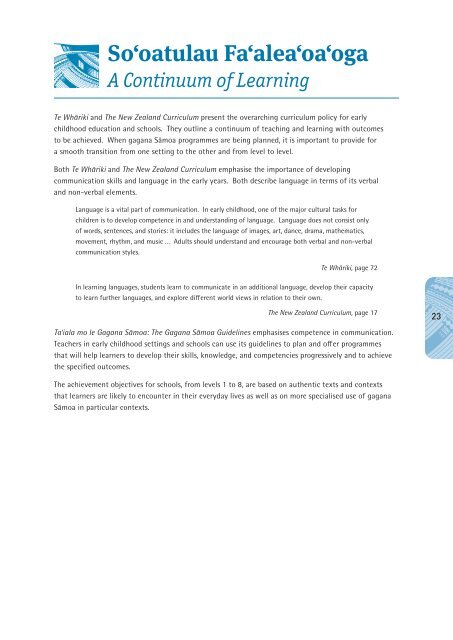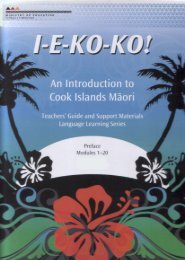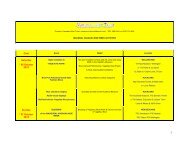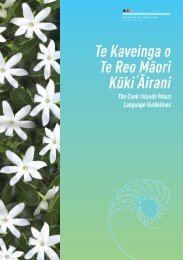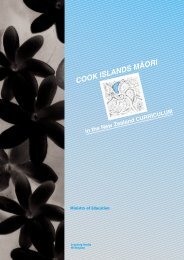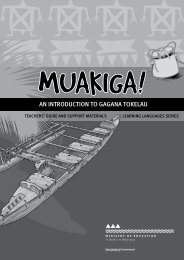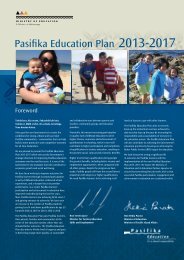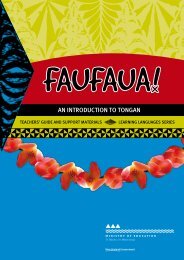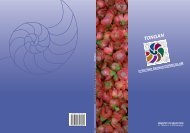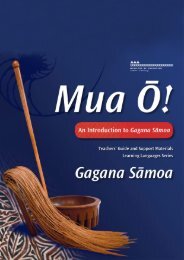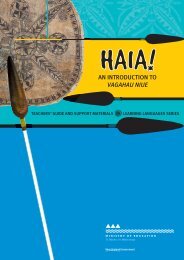Ta'iala mo le Gagana SÄmoa - Pasifika Education Community
Ta'iala mo le Gagana SÄmoa - Pasifika Education Community
Ta'iala mo le Gagana SÄmoa - Pasifika Education Community
Create successful ePaper yourself
Turn your PDF publications into a flip-book with our unique Google optimized e-Paper software.
So‘oatulau Fa‘a<strong>le</strong>a‘oa‘ogaA Continuum of LearningTe Whāriki and The New Zealand Curriculum present the overarching curriculum policy for earlychildhood education and schools. They outline a continuum of teaching and <strong>le</strong>arning with outcomesto be achieved. When gagana Sā<strong>mo</strong>a programmes are being planned, it is important to provide fora s<strong>mo</strong>oth transition from one setting to the other and from <strong>le</strong>vel to <strong>le</strong>vel.Both Te Whāriki and The New Zealand Curriculum emphasise the importance of developingcommunication skills and language in the early years. Both describe language in terms of its verbaland non-verbal e<strong>le</strong>ments.Language is a vital part of communication. In early childhood, one of the major cultural tasks forchildren is to develop competence in and understanding of language. Language does not consist onlyof words, sentences, and stories: it includes the language of images, art, dance, drama, mathematics,<strong>mo</strong>vement, rhythm, and music … Adults should understand and encourage both verbal and non-verbalcommunication sty<strong>le</strong>s.Te Whāriki, page 72In <strong>le</strong>arning languages, students <strong>le</strong>arn to communicate in an additional language, develop their capacityto <strong>le</strong>arn further languages, and explore different world views in relation to their own.The New Zealand Curriculum, page 1723Ta‘iala <strong>mo</strong> <strong>le</strong> <strong>Gagana</strong> Sā<strong>mo</strong>a: The <strong>Gagana</strong> Sā<strong>mo</strong>a Guidelines emphasises competence in communication.Teachers in early childhood settings and schools can use its guidelines to plan and offer programmesthat will help <strong>le</strong>arners to develop their skills, know<strong>le</strong>dge, and competencies progressively and to achievethe specified outcomes.The achievement objectives for schools, from <strong>le</strong>vels 1 to 8, are based on authentic texts and contextsthat <strong>le</strong>arners are likely to encounter in their everyday lives as well as on <strong>mo</strong>re specialised use of gaganaSā<strong>mo</strong>a in particular contexts.


